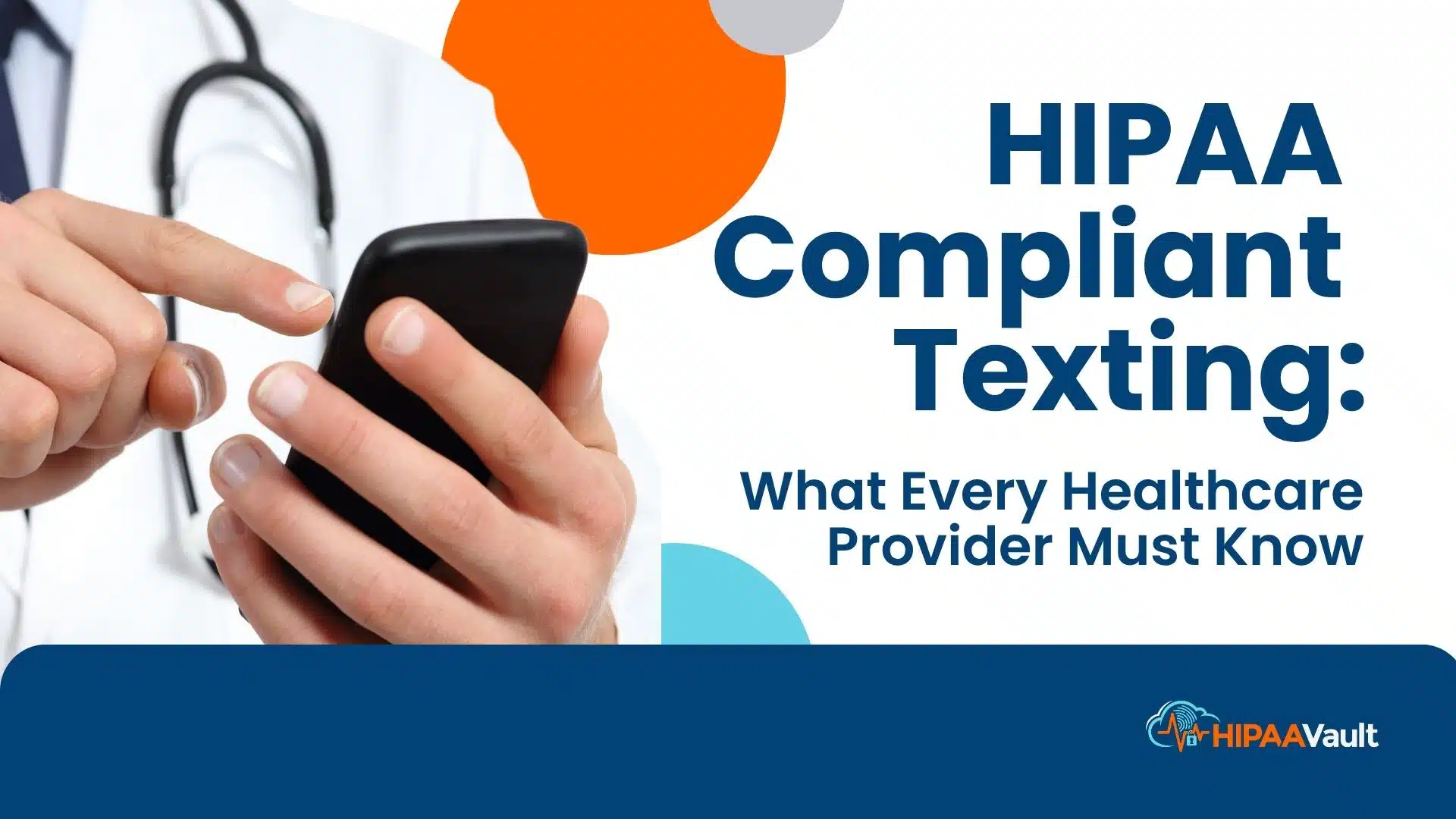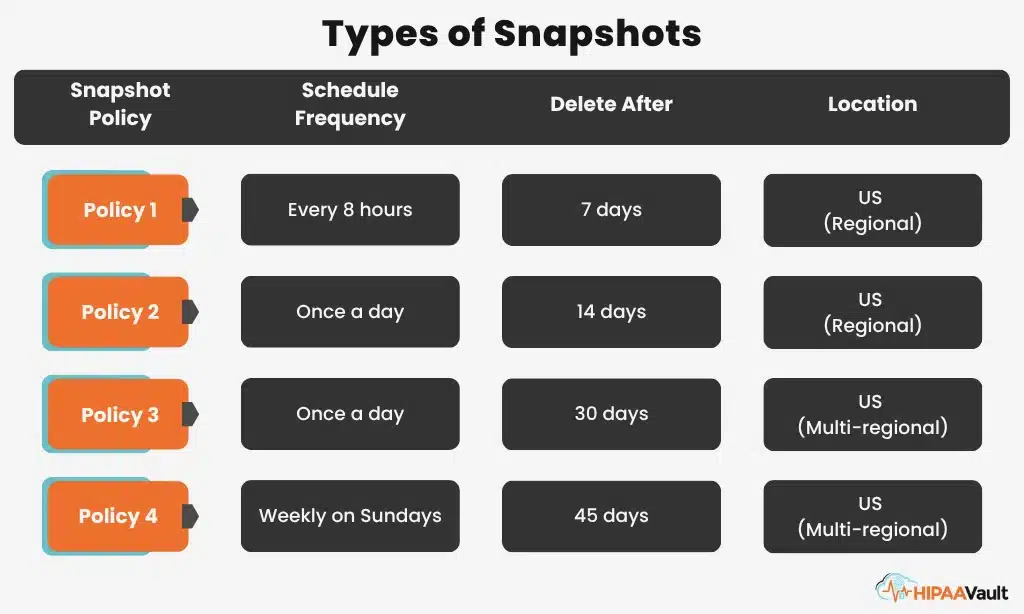In today’s mobile-first world, texting is how people communicate — including your patients.
But in healthcare, texting without proper safeguards can expose your organization to major compliance risks.
That’s why HIPAA compliant texting is no longer optional — it’s a necessity for providers who want to stay efficient, responsive, and within the law.
This comprehensive guide will walk you through:
- What makes texting HIPAA compliant
- Why standard SMS doesn’t cut it
- Best platforms for secure healthcare messaging
- How to protect your clinic from costly HIPAA violations
- Actionable steps to get started
Ready to enable secure texting at your clinic?
👉 Learn how HIPAA Vault supports secure healthcare messaging
Key Takeaways
- HIPAA prohibits sending PHI via standard SMS or apps like iMessage or WhatsApp.
- You must use a HIPAA-compliant texting platform with encryption, access control, audit logs, and a Business Associate Agreement (BAA).
- Texting improves patient engagement, speeds up communication, and reduces no-shows — when done securely.
- HIPAA violations can result in fines up to $1.5 million per incident.
HIPAA-Compliant Texting—Unlimited Users, Zero Setup
Send encrypted appointment and medication reminders directly to patients. Includes BAA and 30-day money-back guarantee.
Learn MoreWhy HIPAA Compliant Texting Is Crucial in 2025
Texting isn’t just convenient — it’s expected. Patients are used to texting for:
- Appointment reminders
- Prescription updates
- Lab result notifications
- Basic follow-up questions
83% of healthcare providers already believe texting improves patient outcomes. But many are still using non-compliant tools.
HIPAA was designed to protect patients’ privacy — and texting must follow its Security Rule when transmitting ePHI (electronic protected health information).
If you’re texting patients using a regular phone app, you could be exposing sensitive data to unauthorized access.
Want to avoid fines and protect patient trust?
👉 Use HIPAA Vault’s secure, compliant texting platform
Why Standard Text Messaging Isn’t HIPAA Compliant
Apps like iMessage, SMS, WhatsApp, and Facebook Messenger are not HIPAA compliant, even if your patient agrees to use them.
Here’s why:
- No end-to-end encryption for ePHI
- No audit logs
- No access control or role-based permissions
- No remote wipe if a phone is lost
- No BAA
Even if messages are “deleted,” they may still reside on a carrier’s server or be backed up to cloud services.
⚠️ Using these tools to send PHI is a HIPAA violation — period.
What HIPAA Requires for Text Messaging
The HIPAA Security Rule defines what must be in place to protect ePHI during digital communication.
Technical Safeguards
- End-to-end encryption (in transit + at rest)
- User authentication and role-based access
- Audit logging of message history
- Remote wipe or auto-delete options
- Multi-factor authentication
- Message expiration features
Administrative Safeguards
- Written policies and procedures
- Ongoing staff training
- Risk assessment for texting
- Signed BAAs with vendors
- Documented patient consent
Physical Safeguards
- Encrypted, password-protected devices
- Use of Mobile Device Management (MDM)
- No public Wi-Fi for transmitting ePHI
- Automatic timeouts and logouts on apps
HIPAA compliance is a combination of technology + policy + training.
👉 Let HIPAA Vault simplify your setup
How to Send HIPAA Compliant Text Messages
1. Obtain Written Consent from Patients
HIPAA allows providers to text patients only if:
- Patients are informed of the risks
- They consent in writing
- The consent is stored securely in your EHR or records
You can’t rely on verbal consent — it must be documented.
2. Use a Secure Texting Platform (Not SMS)
Text messages should only be sent via a HIPAA-compliant texting platform that offers:
- End-to-end encryption
- User-level access control
- Audit logs
- Remote wipe
- BAA coverage
We recommend HIPAA Vault’s secure messaging solution for medical texting.
3. Send Only the Minimum Necessary Information
Instead of:
“Hi Sarah, your mammogram showed abnormal results.”
Say:
“Hi Sarah, your results are ready. Please log in to your patient portal.”
Follow the Minimum Necessary Rule — don’t include diagnoses, lab values, or sensitive personal info unless absolutely essential (and encrypted).
Best Practices for HIPAA-Compliant Texting
Train Your Staff
Train front-desk staff, nurses, and providers on:
- What’s allowed in a text
- How to verify patient identity
- How to handle misdirected messages
Write a Clear Texting Policy
Include:
- Message types allowed
- Consent requirements
- Access levels
- Audit and review schedules
Monitor, Audit, and Document Everything
Maintain logs of:
- Who sent or received messages
- What was sent (content-level audit)
- Access attempts or failures
- Consent revocations
Need help implementing policies?
👉 Talk to a HIPAA compliance expert
Benefits of HIPAA Compliant Text Messaging
When done right, texting can bring massive ROI to your healthcare organization:
- Faster patient communication
- Reduced no-shows
- Fewer phone calls & voicemails
- Improved care coordination
- Lower compliance risk
- Higher patient satisfaction
Ready to modernize your clinic’s communication?
👉 Get started with HIPAA Vault today
Common Mistakes That Trigger HIPAA Violations
Avoid these at all costs:
- Texting PHI via standard SMS or iMessage
- No signed BAA with texting vendor
- No patient consent
- Sending full medical details via text
- Staff using personal devices without encryption
It only takes one mistake to trigger a costly audit.
👉 Contact HIPAA Vault for secure solutions
FAQs: HIPAA Compliant Texting
Next Steps: Enable Secure Messaging at Your Clinic
Still relying on voicemail and email?
Texting is what your patients want — and expect.
But it must be done securely, with the right safeguards in place.
Ready to implement secure texting in your organization?
🔐 Learn more about HIPAA Vault’s compliant platform
📞 Have questions? Talk to our team








